#egyptian goddesses
Text
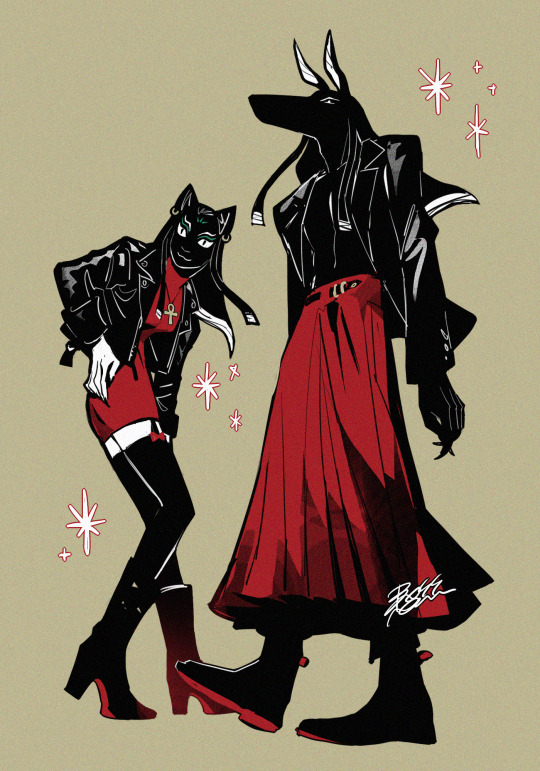
1K notes
·
View notes
Text
GODDESS FEMININE MAGIC ; WHAT CAN WE LEARN FROM THEM? PICK A GODDESS
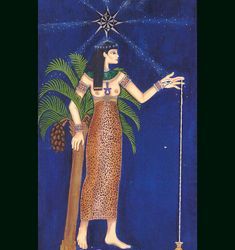
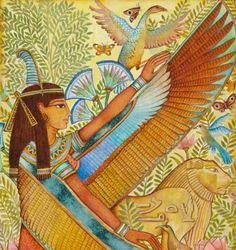
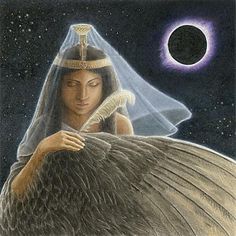
PILE 1 - SESHAT - SCRIPTING. JOURALISM. CONNECTING TO THE STARS. DIVINITY CODES UNLOCKING.
If you feel connected to this goddess archetype, be confident in your abilities to succeed. Manifesting abilities are strongest in writing. Look to the stars for answers as this connects you to the best possible outcome. A lot of you are connected to numerology, astrology and astro sciences and there are a abilities around tech advances for some of you. Be more open to infinite possibilities as this is a remarkable time to get to know yourself and following your dreams. Ase !
PILE 2 - MAAT - UNLOCKING THE TRUTH. WHAT IS IT THAT YOU REMEMBER?
So, this group might be LGBT, non-binary or you could also be straight. This goes for everyone however I seen something about the non-binary group as well.
You guys have a lot of answers that you keep hidden from the outside world. What are you doing? Your light shines when you are embarking in your spirit's mission. You are the sun and the shadows bring favor when you open up to them. What is it that you see? You can't run from them forever, make peace with your shadows. They are the only thing that shows your super power.
Bless.
PILE 3 - NEPHTHYS - ORACLE. SEER. CREATOR. MYSTIC.
Play around a little. Your spark is noticed by thousands of people, you here me? Your inner child is a magnet for beautiful ideas to come through you and escape. Their like mini bubbles castrating around your brain, and finding new ways to deliver magic to anyone it touches. Do yourself a favor and get to writing that book, finishing those puzzles, or even creating that sculpture. You're a magnet for success, everything you touch is Gold. ;) Ase!
#egyptian goddesses#pick a pile#pick a character#mystic#creator#love#channeler#mystic reader#pick a card
113 notes
·
View notes
Text
"I watch DLH Egyptian mythology for educational purposes."
The educational purposes:

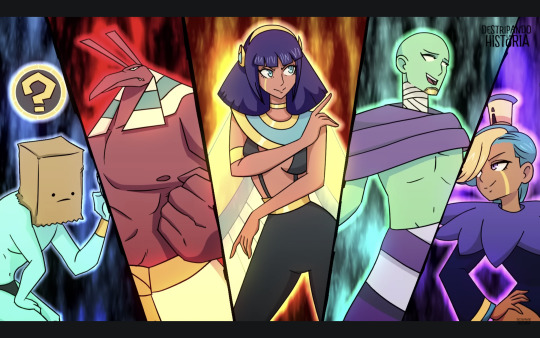

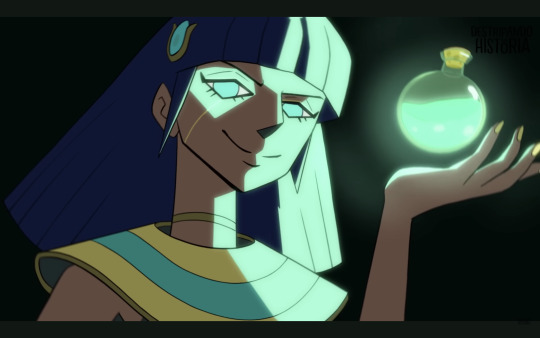
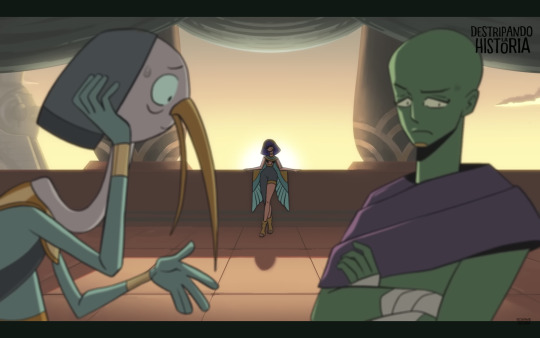

#isis#egyptian goddesses#egyptian mythology#destripando la historia#what a goddess!#the other deities are pretty too#but Isis is the prettiest 😘
32 notes
·
View notes
Text
Egyptian versions of the Greekified/Latinized names of Egyptian Gods:
1. Horus - Heru/Hor/Her/Har
2. Thoth - Djehuty
3. Anubis - Anpu/Inpu/Anpw/Inpw
4. Set - Setekh/Sutekh
5. Nephthys - Nebet-Het
6. Osiris - Asar/Usar/Asari/Ausir/Wesir/Ausare/Usire/Ausar
7. Isis - Aset/Auset/Iset
8. Hathor - Hwt-hr/Hwt-hrw/Hut-Hor
9. Apis - Hjpw/Hapi
10. Apophis - Apep
11. Mandulis - Merul/Melul
12. Maahes - Mai-Hesa
13. Mnevis - Mer-Ur
14. Neith - Nit
15. Satis - Satit/Stit/Satet
16. Ophois - Wapwawet/Wepwawet
#anyone is free to add more#PS: remember that Egyptian wasn't just one language#there were several dialects#so i haven't included their names from all the dialects#just the most popular ones#egyptian mythology#egyptian goddesses#egyptian gods#egyptian history#ancient egypt#egyptology#mythology
19 notes
·
View notes
Text

14 notes
·
View notes
Text
Sekhmet, Bast, and Hathor: Power, Passion, and Transformation through the Egyptian Goddess Trinity
By Normandi Elis | GODDESSES IN WORLD CULTURE | 2010
Three very powerful goddesses take a single form as the oldest divine being in ancient Egypt. They are the lion goddess Sekhmet, the cat goddess Bast, and Hathor, the beautiful woman who wears cow horns. All three goddesses can be found in the Old Kingdom of pharaonic Egypt (circa 3000 BCE) and may predate the First Dynasty (5000-3150 BCE).
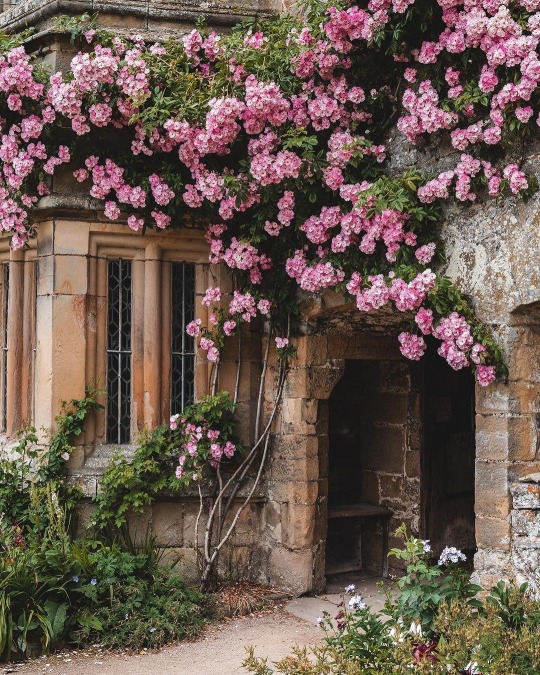
Hathor originated in the predynastic cult of the sacred cow, which saw the Milky Way as the body of the sky goddess. All the stars that lay therein were souls of her children waiting to be born or returning to her in the afterlife. Sometimes Hathor the cow was called Mehurt, whose breasts flowed with milk. Images of the dancing horned goddess were carved on the rocks of the Egyptian savannah as early as 6000 BE. The cow goddess appeared atop the Palette of Narmer, the first pharaoh of a united Upper and Lower Egypt. By the Fourth Dynasty, the face of the cow mother had turned into the sweet, beautiful face of a young maiden. In human form, she wore a crown of cow horns that cradled between them the gleaming disc of the moon or the sun. They called her "The Golden One." The diadem recalls Hathor's celestial home.
She was, at various times, both mother and daughter of Ra, the sun god, and the consort of many divine beings whose temples flanked the Nile. Most notably, at the Temple of Edfu, she was the consort of the hawk god Horus, who was embodied in the living pharaoh while the pharaoh's queen embodied beautiful Hathor. Through all of her incarnations for more than 6000 years, Hathor remained the most frequently seen goddess in temples up and down the Nile. In some form or another, all goddesses drew upon her attributes; even the goddess Isis, whose appearance in Egypt coincides with the cow goddess, was often depicted wearing cow horns and was, at times, called the daughter of Hathor.' Two other ubiquitous goddesses embodied the duality of her nature-Sekhmet when she manifested solar attributes. and Bast in her lunar attributes.
Bast appeared dressed in green, the color of fecundity. A nurturing presence, she exhibited those feminine qualities associated with the moon. Her presence in the niches of most Egyptian homes was a peaceful, loving one. She tended her children, fed them, bathed them, loved
them, and soothed their hurts. This cat-headed goddess was the tamed version of her bloodthirsty sister Sekhmet.
Powerful Sekhmet wore a crimson robe. Fiery, fecund, and magical-the energy of life itself--the lion goddess protected the pharaoh. More statues of her remain in Egypt that of any other divinity. On the walls of Karnak temple, the lion goddess may be seen dashing alongside the chariot of pharaoh Ramses II as he entered battle. Sekhmet was considered a great spiritual warrior. She protected the temples and borders and exhibited in female form the solar qualities most identified with the sun god Ra. When the wicked of the world wearied the god, Ra sent his daughter Sekhmet to deal with them.

The Solar Origins of Sekhmet
Sekhmet's main feast day in Egypt was celebrated when the star Sirius in the constellation of Canis Major rose prior to sunrise during the month of August. The rise of Sirius signaled the coming change and renewal that occurs each year following the "Dog Days" of summer. After the thaw of snowcaps in central Africa's mountains, the annual Nile flood begins to wend its way northward, ending the summer drought and initiating the season of inundation.
In dramatic fashion, the rising Nile waters pushed the flood from Khartoum in Sudan, down through Upper Egypt, and finally all the way to the Delta in the north. When the inundation first trickled forth, the waters looked greenish before they turned an opaque, dark ruddy color from a type of red algae pushed out of the central African tributaries and downriver by the melting snow and floodwaters. The Arabs called this the Red Nile.
The red flow soon precipitated a burst of life-generating activity along the Nile banks. It may help here to realize that the Egypt of 10,000 BCE was a different place than today's land. Rather than being primarily desert, Egypt was a lush savannah, teeming with life. Some suggest that the overgrazing of cattle and climate change may have caused the Sahara savannah to turn into desert. After this change, around 6000 BCE, life in Egypt shrank to occupy primarily the Delta and the narrow strip of arable black earth washed down into the bottomland on either side of the Nile.
One of the many festivals that celebrated the flood and opened the Egyptian New Year was called "The Inebriety of Hathor." The beer-and wine-drinking festival that followed the first sign of flood was connected to the intoxicating drink that soothed the savage Sekhmet, a solar form of Hathor. The festivities that accompany the festival of "The Ine-briety of Hathor commemorated the saving of Egypt from the ravaging power of Sekhmet.
Ra, who created all things, ruled the earth in peace for thousands of years. But as he grew old, his human subjects forgot him and no longer offered their adoration. Outraged, the god summoned his council, soliciting their advice. Nun, god of primordial waters, suggested sending forth Ra's fiery solar eye, Sekhmet. The idea of sending his lioness daughter delighted Ra, who imagined irreverent humans fleeing, trembling in terror, and cowering in the mountains.
At her father's bidding, Sekhmet began to teach humankind a lesson by devouring every man, woman, and child who crossed her path. She ravaged all the land in both Upper and Lower Egypt, through the mountains and savannahs east and west of the river. She started in Nubia and ate her way north toward the Delta. The river ran red with the blood of those she had slain (a reference to the Red Nile flood). As the fierce goddess waded through the carnage, her feet turned red with the blood of her victims.
Ra looked down upon the havoc Sekhmet had created and felt immediate remorse. The thirst of his daughter for blood knew no bounds. He tried to rein her in, saying, "Come home. Thou hast done what I asked thee to do." But Sekhmet replied, "By my life, I love the taste of blood.
My heart rejoices and I will work my will upon humankind." She would not be deterred.
Ra realized he had made a grave mistake, but neither god nor human could stop Sekhmet. But if she could not be stopped, perhaps her willful passions could be diverted. Ra turned to Thoth, god of wisdom. Thoth quickly sent his messengers to Elephantine Island, where the river burst forth from rocks. "Bring me the fruit that causes sleep," he said, "the fruit that is scarlet and its juice crimson as human blood." When the messengers returned, Thoth and Ra commanded the women in the city of Heliopolis to crush red barley and make beer. They mixed it with the juice of pomegranates and other magical ingredients, according to the recipe of Thoth. The women of Heliopolis made 7000 measures of this red beer.
At dawn, this soothing red brew was poured into a pool outside the city, where Sekhmet would find it. Thinking it was the blood of her vic-tims, the lioness lapped up the mixture until it was gone. When the potion took effect, the heart of the fierce goddess was soothed. Sekhmet lay down and purred, no longer seeking revenge. She stretched out in the field for a sweet little sleep, having transformed herself into the gen-tle, nurturing, loving cat goddess, Bast.
This myth shows for the first time the emerging dual nature of Hathor. Bast is the sensual, purring, nurturing aspect, while Sekhmet is the roaring lion, a goddess with a temper. Bast reveals the nurturing mother of her kittens; Sekhmet shows herself the protector of her pride and her cubs. When Hathor's solar qualities are the focal point, the goddess assumes Sekhmet's lion form, and when her lunar qualities are at play, she appears as Bast the cat.
The beer that soothed Sekhmet was a staple of the Egyptian diet.
Because the brewing and fermentation processes made the Nile water more potable and healthful, beer was offered at breakfast, lunch, and dinner.
But wine was the favored drink of great celebrations. Whenever Hathor appeared as the "Queen of Happiness" and "Mistress of Drunkenness, Jubilation and Music" in one of more than forty festivals held in her temple at Dendera, alcoholic beverages were in plentiful supply. The sacred wine that induced a trancelike state may have contained psychotropic plants, says Robert Masters, possibly including belladonna, wormwood, or opium? C. J.
Bleeker believed that this sacred drunkenness was "the medium through which contact could be effectuated with the world of the gods."

Triple Aspects of the Goddesses
Bast and Sekhmet are such tightly linked aspects of Hathor that the three goddesses were sometimes sculpted standing back to back on the handle of a cosmetic mirror. Because the ancestry of all three goddesses reaches back into the early dynasties of Egypt, they may be aspects of a single, superlative feminine divinity. The goddesses names evoke that divine being by her attributes: Sekhmet (the powerful one), Bast (the soul of mother Isis), and Hathor or Het-hor (the house or shrine of the gods."
In later times, the Ptolemaic Greeks (circa 300 BE linked Hathor with Aphrodite, the goddess of love and beauty. Their reasoning is easy to follow, for Hathor's consorts were many. She was consort to Horus the Younger, the falcon god. She was linked as well to a number of gods, among them the crocodile Sobek, the ithyphallic Min, and the solar Ra. She shared her power equally with the gods but remained independent of the Goddesses
The festival of "The Inebriety of Hathor" calmed that inner rage and provided Egypt's general populace with an outlet for their pent-up emo-tions. "Similar festivals were celebrated at the end of battle, in order to pacify the goddess of war, so that there would be no more destruction.
On such occasions, the people danced and played music to soothe the wildness of the goddess."
The Blood Mysteries
Together Hathor, Bast, and Sekhmet create a unified image of the divine feminine as maiden, mother, and crone. The three goddesses represent the stages of the blood mysteries that rule a woman's life as she moves across the roles of lover, mother, and elder. Beautiful Hathor is the consort of Egypt's gods and the perfect embodiment of the queen partnered with the pharaoh who embodies Horus. Bast is the mother protector of children, surrounded by her litter of kittens; she is also the bridge between the sensual young adult woman and the older, but still sexual wife and mother.
Sekhmet embodies the cyclical blood that flows at birth and death; the blood that flows from mother to child in the womb; the blood on battle-fields, and the menstrual blood or the blood of circumcision that separates the budding young adult from childhood. It is the cyclical red flood of the River Nile that became equated with the red, renewing menstrual blood that cleanses and prepares the way for renewal and regenesis. This blood is a kind of communion, in which humankind partakes of the divine drink of the gods. That is the mystery of transubstantiation.
Blood held within was called the "wise blood," and menopause marked a time for women in ancient Egypt when the inner Sekhmet produced divisions and created magic. The red henna (or Egyptian privet) that adorned the heads of women in Egypt was a tribute to her and was said to be her "magic blood." Heads, hands, and feet were dipped in the colors of the goddess. Cheeks and lips were brushed with her paint. Even mummy cloths were sometimes dipped in henna as a sign of rebirth from the blood of the goddess.
To the left of the 'Temple of Karnak sits a small temple dedicated to the great trinity of Memphis Ptah, Sekhmet, and their offspring Nefertum.
During the Eighteenth Dynasty the pharaoh Thutmose III refurbished the temple to honour the trinity. He made his annual harvest festival offering of "Feeding the Gods" at that smaller temple rather than at Karnak. To this day, inside that temple resides a large, black basalt statue of Sekhmet, who was said to be "great of magic." In fact more statues of Sekhmet can be found at Karnak than at any other temple and more statues exist in situ than any other divinity.
Thutmose III beseeched Sekhmet by calling her Mut, a word used to mean both "mother" and "death"; its hieroglyph of the vulture symbolized both. Not only does the vulture lay eggs, but it eats the dead. On a higher level, nurturance often demands sacrifice. The goddess feeds her people, who in turn feed the goddess. Thutmose III provided thrones of gleaming electrum for Ptah, Sekhmet, and Nefertum. He filled their temple with vessels of gold and silver, with "every splendid, costly stone," with fine linens and "ointments of divine ingredients." On the day of her feast, Thutmose stood before the altar and made the sacrifices that restore Egypt to "life, prosperity, and health." His gifts line the offering table: many jars of wine and jugs of beer, ducks and geese, a multitude of loaves of white bread, bunches of vegetables, baskets of fruits, and "offerings of the garden and every plant."
The Healing Arts
The healing arts were part of the magical power of a wise woman, and Sekhmet was known as an important healing divinity. Inside one of the ten side rooms that surround the inner sanctuary at the Temple of Edfu, a medical library was kept, and in this place the healing priests, called wab sekhmet, conducted healings." On the left side of the doorway was inscribed the magical, repeating image of a lion-headed cobra. A serpentine Sekhmet seemed to unwrap herself from seven coils and rise out of a shallow basket, her lioness head held high, her eyes glittering, and her tongue thrust between her teeth. Here the goddess appears as the life force itself.
While the priests and priestesses of Bast were adept at soothing jangled nerves and easing depression with herbal potions and music, the healers who were "great of magic" were more often high priests and priestesses dedicated to Sekhmet. They wore leopard skins to link them to her powerful feline energies. Because these goddesses understood the powerful visions brought by intoxication, both Sekhmet and Bast were said to bring healing dreams.
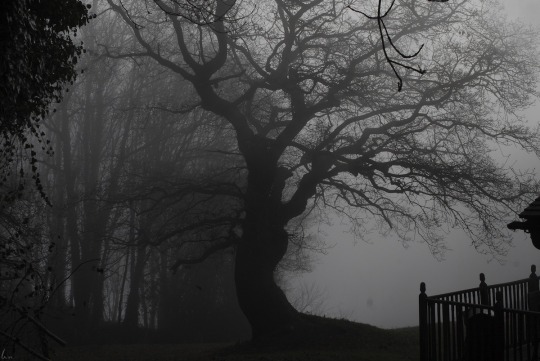
The Beneficent Role of Bast
The cat Bast offered the image of a kinder, more nurturing feline form.
She often appeared as a woman with a cat's head carrying on her arm a basket with a litter of kittens. Mythologist Robert Briffault remarked upon the cat's great adaptability to motherhood and her ability to love substitute children equally with her own. Typically, cats who have lost a kitten willingly adopt the kittens from another litter.' In this area, Bast and Isis share the role of surrogate mother. Before Isis begat her son Horus, she mothered the jackal-headed god Anubis who had been abandoned in the desert.
A number of Egyptologists cite Greek sources that describe Bast as the "Soul of Ra"; like a cat that had nine lives, the sun god Ra had nine divine beings under his command. These nine primordial gods, called the Great Ennead, were generated from Ra's light substance. Other ancient Egyptians identified Bast with Isis as the true mother of all, whether she was mothering her own children or the abandoned children of others. Nearly every household with children had a wall niche devoted to Bast. Before her were laid fresh flowers, cups of milk, or other offerings. Statues of Sekhmet may have been the appropriate energy to guard the temples, the borderlands and the pharaoh, but Bast was the welcome guardian of the home. Little cat figurines of Bast with round head and pointed ears were produced in great quantities for private devotion. Families often owned a number of cats.
Affectionate and graceful, they made great companions, and they kept away mice and snakes. When a cat died, it was mourned as a beloved family member, mummified in great ceremony, and buried with honour. Fifteen centuries later when the Suez Canal was being dug, workmen had to stop for weeks at a time to clear away the multitude of cat mummies they had uncovered in ancient pet cemeteries.
The cat goddess sometimes wore a necklace bearing the healing Eye of Horus, called the wadjet. At other times she wore on her breastplate the lion's head of her sister Sekhmet, a reminder of her fierce other self and of the mercurial ability of the feline goddess to change from lap kitty into warrior in the blink of an eye.
The dual nature of the goddess-her loving nature on the one hand and her wild anger and abandon on the other are nowhere more tightly woven than in the myths of Bast and Sekhmet. Prayers to Hathor are quick to praise both aspects, lest one offend the other. This Hymn to Sekhmet-Bast appears in The Egyptian Book of the Dead:
Mother of the gods, the One, the Only.
Sekhmet is th name when thou art wrathful.
Bast, beloved, when thy people call.
(Sekhmet) daughter of the sun, with flame and fury. . ..
Bast, beloved, banish all our fears.
Mother of the gods, no gods existed
Til thou . . . gave them life.
In the Nile Delta Bast retained her stature from prehistory down to the reign of the Ptolemaic Greeks (343 BCE. According to the histories of Manetho, Bast's sacred city Bubastis, was active as early as 2925 BE and influenced the theology of the priests of nearby Memphis, Heliopolis, and Sais." During the Fourth Dynasty, pharaohs Khufu and Khafre kept laborers busy refurbishing and adding to Bast's main temple, in addition to building the pharaohs' grand pyramids. One royal inscription found on the Giza Plateau near Khafre's pyramid reads: "Beloved of the Goddess Bast and beloved of the Goddess Hathor."? Such an inscription linking Bast and Hathor is remarkable, since no other inscriptions of any kind occur elsewhere on the site.
During the Twenty-Second Dynasty, pharaoh Sheshonk I elevated Bast from local patron to the stature of a national heroine, chiefly because his lineage descended from her sacred city of Bubastis. By 930 BE all Egypt adored Bast. King Sheshonk I, who considered himself a son of Bast, boldly moved the capital city from its long-standing home in Thebes to his hometown in Bubastis.
Although only a few crumbling walls remained in Bubastis, Sheshonk restored the Old Kingdom temples and erected new temples to honor the cat goddess. According to Herodotus, who visited the city around 600 BCE, no other temple compared with the grandeur of that of Bast. It was built in the very heart of the city, situated on an island enclosed by two divergent streams of the Nile that ran on either side of a single pas-sageway. Each stream seemed 100 feet broad, and on the banks of the river were "fair-branched trees, overshadowing the waters with a cool and pleasant shade." A tall tower could be seen clearly from every part of the city. Inside the enclosure wall a beautiful garden of trees shaded the priests who carefully tended it. Part of the temple was said to have been built around an ancient sacred persea (avocado) tree. At the center of the temple stood a beautiful golden statue of the goddess Bast.
Throughout the Delta in general, and at her sacred city Bubastis in particular, Bast was adored for her sensuality, congeniality, and loving nature. The Greeks especially loved her, and Bast festivals were never more popular than during the Graeco-Roman period. When migrating Libyans appeared in the Delta around 100 BE. the nonulation of the city soared once again.
Herodotus calls the "Great Festival of Bast at Bubastis" (April 15) one of the most important festivals in Egypt. At times bawdy, at times ecstatic, the festival celebrated Hathor as the consort, while it also celebrated Bast and her sister Sekhmet. The three were never found far apart. This may have been a result of the wine- and beer-drinking that accompanied nearly every feast day in Egypt, all the more so when one is reminded of the mystery of blood that transformed the ravaging Sekhmet into the purring Bast.
During the Great Festival visitors came from far and wide, clattering through the streets, clustering along the riverbanks, and crowding their boats onto the Nile. The festivals often drew over 700,000 people_-including men, women, and children-and the days were filled with dancing, music-making, love-making, and wine-drinking. Drinking wine was viewed as a high religious sacrament, for its color was reminiscent of the blood of the divine and a reminder of spiritual renewal. Bubastis was the wine capital of ancient Egypt, its rich Delta soil providing large pharaonic estates bearing the choicest grapes. The white wines of Lower Egypt were called the Wine of Bast, while the red wines of Upper Egypt were called the Wine of Sekhmet.
Bast's island temple could only be reached by the crowded little ferry-boats that plied the waters of the Nile. Some of the larger boats filled with richly adorned noblemen and women sailed down river all the way from ancient Thebes. As they approached the little towns along the Nile, villagers heard the swelling strains of music coming from the flute players and the women playing castanets. They heard the songstresses and sometimes trickles of laughter. Long before Bubastis was reached, the wine and beer had begun flowing. As the boats neared town, the villagers came down to the edge of the water to greet the entourage. If the boats stopped in town to freshen supplies, even more people crowded aboard to join the sailing party.
Herodotus said that more wine was consumed in Bubastis during the festival than at any other time of the year. Delicious foods included honeyed breads, raisin cakes, pomegranates, figs, roasted fowl, and meats.
The streets fairly writhed with dancing, music playing, and singing all day and night.

Hathor: Goddess of Dualities
The ubiquitous goddess Hathor who reigned in heaven, on earth, and in the afterlife was the patron goddess of all women in whatever stage of life, but she is most beloved as the consort or divine wife. Her name Het-hor literally meant "the house" or "the shrine" of Horus, the falcon god. That shrine was her sacred womb.
In older myths, Hathor was the mother of Horus the Elder when he appeared as the solar child that the sky mother birthed onto the horizon.
In later myths, Hathor became the beloved of Horus the Younger, whose mother was Isis. Whether she was connected to the elder or younger Horus, Hathor remained always eternally youthful and beautiful, even though she was older than Isis.
Her temples were found at Memphis, Thebes, the Sinai, and elsewhere.
She was honored at Edfu, Kom Ombo, and Esna. The most important and well known of her temples was the Temple of Hathor at Dendera, which in its present condition is a Ptolemaic temple built around 332 BCE, but its inscription says it was built upon the previous site where the Fourth Dynasty King Cheops erected a temple to the goddess.!* Its most famous attribute is its dramatic astronomical ceiling with symbols of the zodiacal signs that can clearly be recognized as the twelve familiar constellations.
And yet, its pole star is not in Ursa Major but in Draco, the constellation that it would have appeared as pole star around 4500 BE, an age that predates the temple having been built by Cheops. This representation of the sky and the temple of the sky goddess Hathor seems to point to the dawning of ancient Egyptian civilisation.
In her temple Hathor's statue was venerated and venerable, adored and adorned for thousands of years. Thus, the statue acquired the power to heal, to speak, and to bring dreams to her worshipers. Pure Nile water poured over the base inscriptions of her statue could heal diseased bodies, minds, and spirits. The pilgrims wrote stories of their miraculous healing in prayers, poems, and inscriptions through the Dendera temple.
As the oldest goddess in Upper Egypt, Hathor was assimilated into nearly every other goddess. Isis the mother and Hathor the consort become interchangeable. Wherever there was a temple that honored Hathor, there was also a smaller temple that honored Isis, and vice versa. In the Temple of Isis at Philae, the inscribed "Songs of Isis" praise the beauty and majesty of Hathor.
Oh, Lady of the Beginning, come thou before our faces in this her name of Hathor, Lady of Emerald, Lady of Aset, the Holy!'S Because there were so many temples devoted to Hathor, many more women than men served in priestly offices engaged in her service, a custom unlike that of other temples in Egypt. At daybreak the pharaoh engaged in a ritual in which he broke the clay seal on the door of her shrine in order to gaze in silent adoration upon the beautiful face of the goddess. To the mistress of heaven he offered incense, the menat necklace, the sistrum rattle, and maat, the image of truth. 'These were among the pharaoh's gifts to his beloved, for Hathor was the goddess of the queen and thus coming before her was the culmination of a love story.
The sacred marriage of the pharaoh (as the embodiment of Horus) and the queen (embodiment of Hathor) was celebrated in May, during one of many harvest festivals. The festival began at the Temple of Hathor in Dendera and lasted about fourteen days, ending in Edfu at the
'Temple of Horus. During the festival, the statue of "The Golden One" was carried along the Nile by boat amid music, dance, and song. The union of the two most important lights in heaven was the culmination of the meeting of Hathor and Horus in Edfu. Their marriage took place precisely on the day of the new moon, when the sun (Horus and the moon (Hathor) met in heavenly conjunction. The ancient Egyptians called this "The Day of the Beautiful Embrace."
On the inner face of the east pylon of the Temple of Edfu is a description of the annual festival of the sacred union. The ritual marriage took place privately inside the temple where the divine couple remained for three days, consummating their holy marriage. Meanwhile outside the temple walls the entire population of Edu continued their celebration: drinking, feasting, singing, and dancing.
One song performed for the wedding celebration was called "Hymn to the Golden One." It was sung in chorus by several priestesses while the pharaoh enacted the offering rituals:
The pharaoh comes to dance.
He comes to sing for thee.
O, mistress, see how he dances!
O, bride of Horus, see how he skips! ...
He offers thee
This urn filled with wine.
O, mistress, see how he dances!
O, bride of Horus, see how he skips!!?
The first record of a celebration of the sacred marriage appeared during the reign of the Middle Kingdom pharaoh Amenemhet I, around 2000 BE. Linked with the harvest season rites, it commemorated the first fruits of the field and was held in honor of the ancestors.
In the union of the god and the goddess, all life had its regenesis. Of all the festivals in Egypt, this truly was Hathor's day. It was a festival in honour of the bride, for it is she who becomes mother of the holy child.
The hierogamos or sacred marriage was a union of opposites. In this pair, Hathor is the divine mother, the sky, and Horus is the falcon god and the earthly king. It is a sacred marriage of sprit and flesh, heaven and earth. Every royal couple who ever lived reenacted the marriage sacrament as much for the renewal of the land and their people as for themselves.
Three days after the hierogamos was celebrated, the festival of the "Conception of Horus" occurred, which celebrated the seed that means the renewal of life. This was also considered the conception day of the pharaoh and of the child who would succeed him. From lovemaking came the heir to the throne. Here, father and son were merged into one.
Hathor's love was sexual, maternal and spiritual. These triple aspects represent the deep passion for love, life, and light that runs through all her cosmic creation. Her powers generated "constant and ceaseless becoming." Her love for humankind was eternal.
Notes
Normandi Ellis, Feasts of Light: Celebrations for the Seasons of a Woman's Life Based on the Egyptian Goddess Mysteries (Wheaton, IL: Quest Books, 1999), 144.
Robert Masters, The Goddess Sekhmet: Psychospiritual Exercises of the Fifth Way (Woodbury, MN: Llewellyn Publications, 1991), 44.
C. J. Bleeker, Hathor and Thoth: Two Key Figures of the Ancient Egyptian Religion (Leiden, Netherlands: E. J. Brill, 1967), 91.
Ibid., 132.
Masters, The Goddess Sekhmet, 44.
See the "Cannibal Hymn of Unas" in Miriam Lichtheim, Ancient Egyptian Literature, vol. 1, The Old Kingdom (Berkeley: University of California Press, 1975), 36-38.
James Breasted, Ancient Records of Egypt (Chicago: University of Chicago Press, 1906), 2:225-248.
Normandi Ellis, Dreams of Isis: A Woman's Spiritual Sojourn (Wheaton, IL: Quest Books, 1995), 178.
Robert Briffault, The Mothers New York: Macmillan, 1927), 594.
Margaret Murray, Egyptian Religious Poetry (London: John Murray, 1949), 103.
E. A. Wallis Budge, The Gods of the Egyptians New York: Dover, 1969), 1:445.
Marilee Bigelow, "Bast," Khepera 2, no. 2 (March 1991).
Budge, The Gods of the Egyptians, 1:449.
Bleeker, Hathor and Thoth, 76.
James Teackle Dennis, The Burden of Isis (London: John Murray, 1918), 55.
Lucie Lamy, Egyptian Mysteries: New Light on Ancient Spiritual Knowledge New York: Crossroads, 1981), 80.
"Hymn to the Golden One," in Bleeker, Hathor and Thoth, 99. Reprinted with permission.
Bibliography
Bigelow, Marilee. "Bast." Khepera 2, no. 2 (March 1991).
Bleeker, C. J. Hathor and Thoth: Two Key Figures of the Ancient Egyptian Religion. Leiden, Netherlands: E. J. Brill, 1967.
Breasted, James. Ancient Records of Egypt. 5 vols. Chicago: University of Chicago Press, 1906.
Briffault, Robert. The Mothers. 3 vols. New York: Macmillan, 1927.
Budge, E. A. Wallis. The Gods of the Egyptians. 2 vols. New York: Dover, 1969.
Dennis, James Tackle. The Burden of Isis. London: John Murray, 1918.
Ellis, Normandi. Dreams of Isis: A Woman's Spiritual Sojourn. Wheaton, IL: Quest Books, 1995.
Ellis, Normandi. Feasts of Light: Celebrations for the Seasons of Life Based on the Egyptian Goddess Mysteries. Wheaton, IL: Quest Books, 1999.
Lamy, Lucie. Egyptian Mysteries: New Light on Ancient Spiritual Knowledge. New York: Crossroads, 1981.
Lichtheim, Miriam. Ancient Egyptian Literature. Vol. 1, The Old Kingdom. Berkeley: University of California Press, 1975.
Masters, Robert. The Goddess Sekhmet: The Way of the Five Bodies. New York: Amity House, 1988.
Murray, Margaret. Egyptian Religious Poetry. London: John Murray, 1949.
11 notes
·
View notes
Text
Egyptian gods - The Ennead, Isis
After Seth, what next logical step but to explore his arch-nemesis. Horus you say? No... His sister and foe, the great Isis.
I) Wife, widow, witch
Let’s begin with the role of Isis in the Osirian legend. Isis is one of the two daughters of the god Geb (the earth) and the goddess Nut (the sky), alongside Nephthys ; and just like her sister married their brother Seth, she married her brother Osiris. It was a true “love at first sight” story. Literally. Osiris was born on the first of the epagomenal days, on the 14th of July. Isis was born on the fourth of the epagomenal days, on the 17th of July. Their wedding was celebrated on the 19th of July - which was the first day of the year in the Egyptian calendar. The couple dearly loved each other, and as Osiris inherited the throne of Egypt, they ruled as wise, kind and benevolent king and queen over humanity, adored and beloved by all...
Until the jealous and bitter Seth, envious and angry at his brother, murdered him, locked his body in a great chest and sent the sealed box into the Nile. Hearing about the disappearance of her husband, Isis entered a state of deep grief, cutting her hair and tearing apart her clothes. But, determined to give Osiris the proper burial he deserves, she went out to seek her husband’s corpse, exploring all of the Nile, from beginning to end. One day, she smelled a beautiful scent - and following it, she travelled for kilometers and kilometers, ending up at the palace of Byblos, in Phoenicia. There, she understood the smell that attracted her there came from a recent pillar, built to support the roof of the palace. Touching the heart of the Byblos rulers with her grief, Isis convinced them to allow her to break open the pillar - and inside of it was Osiris’ corpse... As it turns out, the coffin had floated all the way to Phoenicia, and there a tree grew around it, the same tree that was used to create this pillar...
Taking her husband’s corpse back with her to Egypt, Isis hid it away in the swamps of the Delta, out of fear of what Seth would do it... Unfortunately for her, the treacherous brother was informed of her arrival, and the god of the desert came into the swamp to cut Osiris’ body into little pieces and throw them into the river. Isis began a new quest, this time assisted by her sister Nephthys: slowly, she explored all of the Nile again, collecting all of the pieces of her husband, putting them back together like a morbid puzzle. She completed her quest at the town the Greeks called Herakleopolis, where she found the right leg of her husband. His body was re-created, except for a missing piece: his penis, that a fish had swallowed. As she tries to recreate her husband’s body, Anubis comes by Isis side and brings his help: with Nephthys by their side, the gods end up creating the very first mummy in the history of Egypt. As she and Nephthys give Osiris the deserved funeral rituals, Isis cannot help but try one last attempt at saving her husband: kissing him, she uses her magical powers to breathe some life-force into his corpse, resurrecting Osiris. Only for a brief time, however, as Osiris prefers to stay among the dead to become their king - but during his brief return to Earth, he still shares one last tender night of love with his wife... From which a baby will be born, young Horus. If you wonder about the missing penis... magic. That’s the solution to everything - Isis used magic. Don’t ask further questions.
[Note that this entire quest as described above comes from the Greek record of Plutarch, the only full and complete version of the legend of Osiris. We have Egyptian records, that do differ from Plutarch’s story, but they are all fragmentary and incomplete. For example, in the Egyptian stories the whole “swallowed by a fish penis” doesn’t exist, but in return in the Plutarch story it isn’t Horus that is born from the resurrection-sex, but Harpocrates...] The Egyptians themselves did celebrate and commemorate the quest of Isis during a trio of days. At the end of the season of akhet, the 27th, 28th and 29th days of the month of choiak were religious rituals re-creating Isis quest - the first two days are sad mourning days, while the third is a joyful series of rites celebrating the corpse of Osiris being found. In today’s calendar, the trio of days would be the 12th, 13th and 14th of November.
Now that her brother-husband had a proper burial, Isis puts her mind to the next order of business: protecting her son, Horus, and taking revenge against her brother Seth. She secretly raises Horus in the delta, hidden away, until he comes of age and she can bring him to the gods, claiming him as the true and only heir to the throne of Osiris, that Seth had usurped. Follows a long and complicated divine trial, a legal battle during which Isis constantly helps her son. In fact, she helps her son so much that Seth, annoyed at her constantly beating his arguments, convinces the president of the trial to move the court to a remote island, the “Middle-Island”, from which Isis will be banned: the god that acts as the ferryman to the island, Anti, is given the order to not let Isis in... But it is without counting on Isis’ magical powers - she merely has to transform herself into an old woman to trick Anti. It is Isis that will finally put an end to this legal feud that drags on for eighty years as, disguising herself as an attractive young woman, she will seduce Seth into confessing his crimes and his usurpation of the throne of Osiris... But as with everything in Isis’ life, the troubles won’t stop there. Seth will continue to challenge the authority and inheritance of his nephew, notably by convincing him to partake into a series of physical games and competitions, in which Isis will again help her son. But this time, she will discover her plans can backfire... One of the challenges Seth imposes on Horus is a “who can hold his breath under water the longest” contest, with both gods turned into hippopotami. Isis, trying to help her son, takes a harpoon and throws it into the water - but she mistakenly hits her own son instead of Seth. Immediately healing him with her powers, she then throws the harpoon again and hits Seth this time... But as she does, Seth reminds her plaintively that he is her brother – and Isis, overtaking by a sudden sisterly love, realizing she cannot harm her very own brother, removes the harpoon and heals Seth. Seeing his mother heal his hated uncle, Horus will get angry - so angry he will BEHEAD ISIS, before fleeing away with her head as her body turns into a stone statue... [This is actually a mix of two versions, one in which Horus beheads his mother because she took pity on Seth, another in which Horus got enraged at his mother for hitting him instead of his uncle.] Don’t worry though, thanks to Thoth she gets better. This however is without a doubt the last time she tried to help her son - who anyway finally managed to beat Seth in the end.
II) The most beloved of all goddesses
The popularity of Isis cannot be underestimated. She received a worship throughout ALL of Egypt, and her cult only stopped being active in Egypt in the 6th century. Not BC! 6th century current era! She was so popular that, during the Roman era, her cult was brought to Rome and she became one of the numerous mystery cults/foreign cults of the Roman Empire. Caligula, out of all Roman emperors, loved her greatly and had a temple built for her in Rome.
Isis represented the ideal woman for the Egyptians of old. She was a faithful and devoted wife, as much as a loving and helpful mother: alongside Osiris and Horus she formed the “triad of Abydos”. She was perceived as the protectress of family as a whole - with a special soft spot for women and children, that she protected much more than men. Her numerous quests to fetch her husband’s corpse, and then re-create it, also placed her in the role of a funeral goddess: alongside her sister Nephthys she was one of the goddesses who watched over both the corpses and the “resurrection” of the deceased - aka the dead finding a new existence in the afterlife. Isis was said to have been a goddess very close to humanity, so close she taught humans a handful of tricks and crafts: she gave them the basics of medicine, and explained to them how to spin flax and weave cloth. Her symbol was the “magical knot”, called the “knot of Isis” or “girdle of Isis” - the tyet symbol. The tyet symbol looks like the cross of life, the ankh, but with the branches falling down instead of going sideways: this sign was the symbol and amulet of “protection”.
Isis was one of the rare goddesses not depicted as an animal-headed woman. Isis usually appeared as a regular woman, with a chair/seat on her head. The symbol of the chair or the seat was her symbol, needed to write her name - but from it merely being a symbol of her name, this chair or seat became much, much more... For you see, this seat was equated and identified as the throne. The throne of Egypt. Wasn’t she after all the wife of Osiris, one of the former divine pharaohs, and the mother of Horus, the next divine pharaoh? Even more, all pharaohs were thought to be manifestations and embodiments of Horus, who was THE god of the pharaohs! By extension, Isis was seen as the “mother” of all pharaohs, the living embodiment of the throne of Egypt and the protectress of royalty. Isis was sometimes depicted with wings (in legends she was said to be able to turn into a bird, for example after tricking Seth into confessing his usurpation she flew triumphantly in the sky as a kite bird), and again these wings were a symbol of protection, as she wrapped them around either the pharaoh or the dead to shield them.
Through time her popularity grew so much that Isis started assimilating the attributes and functions of many other female goddesses: Sekhmet, Selkis, Neit, Satis, Opet... Her most notorious “fusion” was with the goddess Hathor, resulting in Isis inheriting the “cow horns holding the sun between them” or the sistrum in her hand, two symbols typical of Hathor. In fact, remember the “beheading” episode described above? The myth goes that Thoth healed Isis by giving her a new head... a cow’s head. This was to explain why Isis was sometimes depicted as cow-headed when Hathor was THE cow goddess, not Isis.
By the time the Ptolemaic dynasty and of the Roman domination, Isis had grown into the “universal goddess”, the “mistress of all the gods” and the one maintaining the very balance of the universe.
III) The goddess of magic
One final attribute of Isis must be given here: Isis was the goddess of magic. She was the sorceress-goddess, a wizardess among the deities of Ancient Egypt. We are in a case quite similar to the Norse pantheons, where the gods despite having supernatural abilities (the Egyptian gods for example can naturally transform into animals), do not “normally” wield magic, only a few of them does... And Isis is the goddess of magic, charms and enchantments. She was the goddess of spells, and her magical abilities were closely tied to the art of healing. To compare to yet another mythology, the Egyptian magic was closely tied to the magic of Ancient Egypt, where the sorceresses based their art on the “pharmakos”, those drugs and potions that could either be medicine or poison. Similarly, the spells and magical abilities of Isis mostly consisted in things such as removing venom from bites, healing sicknesses, banishing fevers, or resurrecting dying men. This might not seem like much to us today, but in a country of harsh weather filled with deadly diseases and venomous creatures, it was a LOT.
And one specific story actually shows how dangerous Isis’ powers can get, when used for more dubious purposes... A story that also explains why Isis grew to be such a powerful goddess. A story that, finally, highlights the two main “flaws” of Isis - the gods, being similar to humans, also have their flaws. And Isis represented the two typically “feminine” flaws in the Egyptian mind 1) curiosity, or rather a desire to know things at all costs and 2) cunning and ambition, the desire to gain as much power as they could. This story is the one of Ra, the sun god, master of the universe, source of all life, a god with unlimited power, numerous appearances and identities, and even more numerous names. And while all of these names and titles are known, one stays hidden. Ra’s true name, Ra’s first name - a secret name that the solar god hid inside himself (literally, he placed it inside his own body), so that no wizard or sorcerer could ever use any form of magic against him. In Ancient Egypt it was believed that the name of every being, be it a human or a god, held the person’s very essence into it - to know someone’s name was to have power over them. By hiding his true name, Ra made himself untouchable, unattackable, undestroyable. Isis however, as much curious about Ra’s secret name as jealous of his immense power, decided that she would get the sun’s true name. And she hatched a devious plan...
Ra had aged a lot. It might surprise you to learn that, but in the Egyptian theology gods do age. Much slower than humans, though, but they do - and Ra being the first of all the gods, time hit him pretty hard. At the time of the story, one of the most obvious signs of Ra’s aging was his constant drooling - which allowed Isis to steal some of his saliva... Mixing it with soil, she created a form of clay that she then sculpted into a snake, and placed onto the path the sun crossed each day to go through the sky. Animating the clay snake with a magic spell, Isis got Ra bitten - and the magical poison she had created for him was a true horror. Ra fell on the spot, too weak to move. He cried for help, summoning all of his children by his side - as he explained, he wasn’t attacked by either fire nor water, and yet his heart was burning and his limbs were freezing. Since Ra hadn’t created the snake in any way, he didn’t know what it was or how to deal with it – and none of his other “children” knew how to either. As the old god started to violently shake and tremble, Isis arrived and offered her help - promising to heal Ra and remove the poison from him... if he agreed to give her his name. “Because a man can only come back to life if he is called by his name.” Ra gave her a long list of all of his names and titles, but Isis insisted “No, no, no... these names won’t work. You must give me your true name, else I cannot heal you.” Ra, suffering too much, sweating heavily, starting to lose his sight, decided to relinquish his true name, and he gave it to Isis - quite literally, he took his name out of his body to place it inside Isis’s body... But he gave it to her on one condition. He knew that she would transmit his secret name to her own son, Horus – so he made her promise that she would force Horus into a divine oath, a solemn promise that he would keep for himself Ra’s true name, never give it to anyone else, and protect it forever. This is how Isis became one of the rare gods to know the true name of the creator-sun, which allowed her access to an immense power over the ancestor and master of all deities.
I will mention another story illustrating Isis’ magical powers, one that fans of Greek mythology will probably recognize (no need to tell you Isis was strongly associated with Demeter). This episode took place during Isis’ initial quest for her husband’s corpse - she was attracted to the town of Byblos by the wonderful scent the tree-pillar that had grown around her husband’s coffin was creating. Arriving at the palace of Byblos, she managed to touch the heart of the queen of the city, Astarte (not to be confused with the goddess), who allowed her to chop down the pillar of her temple. As a way to thank her, Isis decided to secretly make her a gift - and her idea of a surprise gift was to make Astarte’s son immortal. Hired as a nurse by the royal family of Biblos, Isis didn’t actually breast-fed the royal baby, but rather gave him a magical milk she created through her auricular finger. And every night, she took the baby and placed him inside a circle of fire while reciting incantations - a long process of several days that would transmute the baby into an immortal. However, Astarte grew suspicious of Isis actions, and interrupted one of her nightly fire-rituals, protecting her child she believed to be in danger. But in doing so, the queen interrupted the spell, and condemned her child to live a mortal life...
One final tale, and this post shall end. The story of Isis and the seven scorpions. As Isis was weaving the bandages needed to wrap the mummy of Osiris, she was interrupted by Thoth, who advised her to hide away Horus, to shield him from Seth’s wrath. Isis took Horus, selected seven scorpions to act as bodyguards, and they took off, crossing the Delta, arriving at the Town of the Two Sisters. There, Isis immediately went to the richest family and asked hospitality in their beautiful house – after all, she was a goddess! But the mistress of the house shut the door and refused to let these vagrants in. Isis was forced to ask hospitality from a poor and humble peasant girl, on the other side of the town. The scorpions however were not ready to forgive this insult – six of them took their poison and placed it in the sting of the seventh, that then entered the rich woman’s wife, and stung her son. The rich woman ran screaming all around the town, asking for help for her sick and poisoned son, but nobody helped her. Isis, hearing the woman’s screams, took pity on her, because she could not let a woman suffer the loss of her child. She went to help, and discovering the origin of the venom, she used the respective names of each of the seven scorpions to take control of the beasts, and remove their poison. The rich mother, deeply thankful for Isis’ miracle, abandoned all of her wealth, giving it all to both Isis and the young peasant woman that had welcomed the goddess. [Fun fact: in Ancient Egypt there were two types of scorpions. There was a dark kind, which was relatively harmless, the Scorpioniae. But there was a lighter-colored one, which was much more venomous and dangerous – the Buthridae.]
11 notes
·
View notes
Text
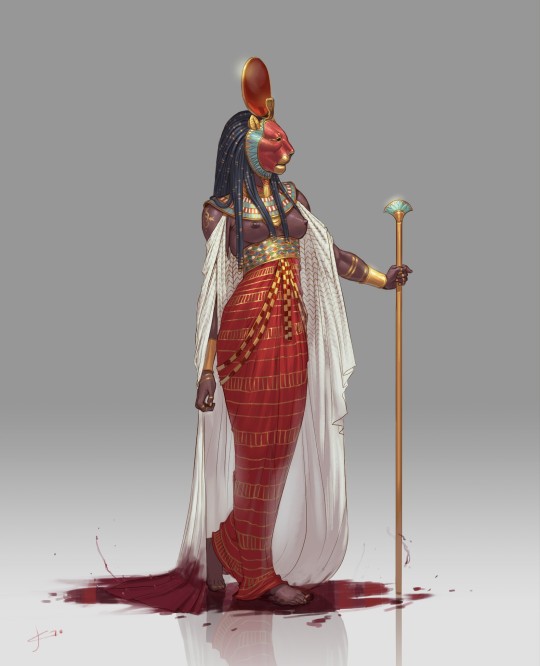
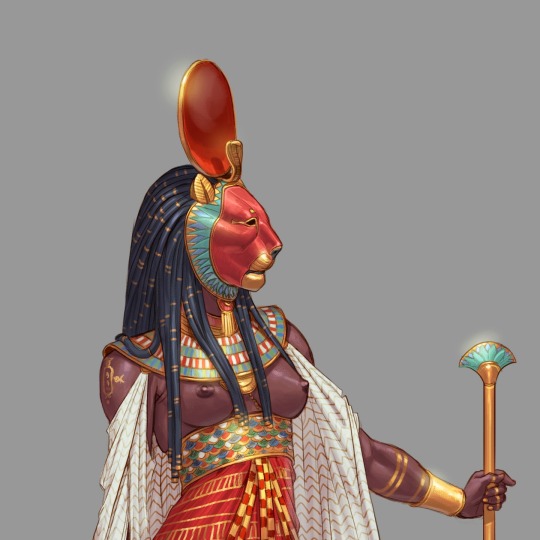
SEKHMET
First born of Ra. She was the lion goddess of war and vengeance. Also from disease and medicine. She was a symbol of strength and power, and it was said that her breath created the desert.
#art#drawing#illustration#sketch#design#gay art#concept art#comics#mythology#sekhmet#egypt#ancient history#ancient egypt#egyptian mythology#Egypt#ra#desert#goddess#egyptian gods#lion#lioness#digital portrait#digital drawing#digital painting#digital art#my art#my artwork#artists on tumblr#fantasy art#fantasy
5K notes
·
View notes
Text

Bastet 𓎯𓏏𓏏𓁐
3K notes
·
View notes
Text

#doodle#egyptian gods#egyptian goddesses#bastet#egyptian mythology#artists on tumblr#illustration#cat
328 notes
·
View notes
Text
Demeter: I want to make this kid immortal, but I can't steal Ambrosia and give it to him.
Isis: Have you considered throwing him into a fire pit?
Demeter:
Demeter: Oh my Gods, why didn't I think of that?
Thetis: *taking note from afar*
#demeter#isis#thetis#greek mythology#egyptian mythology#incorrect greek mythology quote#incorrect greek mythology#incorrect greek gods#incorrect egyptian mythology quote#incorrect egyptian mythology#incorrect egyptian gods#greek goddesses#egyptian goddesses#some may not know this but Thetis used to burn her children with Peleus to make them immortal#it didn't turned out well for the kids#only Achilles survived
40 notes
·
View notes
Text

Sekhmet Rising
Finally finished this older collab with the very talented Anisis! I made the sketch years ago, which she then turned into incredible lineart.
As I recently went on a trip to Egypt it inspired me to finish this artwork featuring one of my favorite goddesses. I think many of us were obsessed with Egyptology as a kid and to finally see all the ancient temples, statues and art in real life really took my breath away and I have no proper words to describe this experience...the heat and cramps were worth it and so much more (photos will come later when I find the energy to do so).
Prints: https://artofmaquenda.etsy.com/listing/1589664059/sekhmet-rising-lustre-print-kemet
1K notes
·
View notes
Text

Egyptian
Bastet
Late Period-Ptolemaic Period
664-30 B.C.E.
Metropolitan Museum of Art Collection
#egyptian art#ancient art#bastet#ancient egypt#ancient culture#ancient history#ancient people#goddess#artifacts#antiquities#egyptian culture#Egyptian aesthetic#aesthetic#beauty#statue#art history#aesthetictumblr#tumblraesthetic#tumblrpic#tumblrpictures#tumblr art#tumblrstyle#artists on tumblr
557 notes
·
View notes
Text
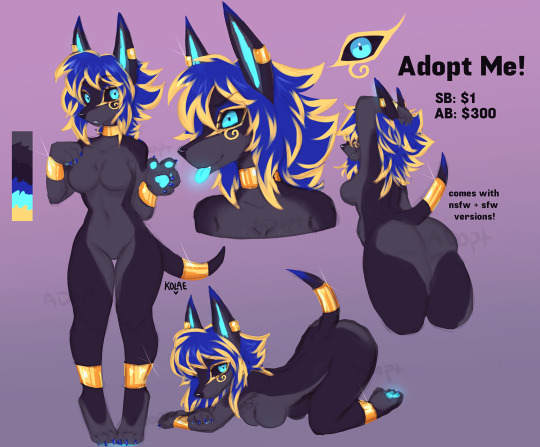
Anubian Jackal Adopt!
comes with sfw + nsfw HD versions of the ref sheet!
Starting bid: $1
Autobuy: $300
Auction ends 24hrs after last bid or AB
Payment plans ok! just message me about your plan first :D
bid in comments or message me your bid! thank you!!
#adopt#adoptable#furry adopt#furry adoptable#char#character#character design#OC#character for sale#auction#adopt auction#anubis#jackal#dog#anubian#egypt#egyptian#ancient egypt#goddess#kolae#furry art#art
258 notes
·
View notes
Text
Egyptian mythology: Triads everywhere
One of the key features of Egyptian mythology is the presence of “triads”.
Each city of Ancient Egypt had a patron-god, one big, popular, male deity overseeing the city, and the Egyptians took the habit of systematically attribute to their patron-god a companion-goddess, a wife, and to complete their family with one singular male child. This ensemble was a “triad” or “trinity”. Some of them were “natural”, as in they naturally formed themselves based on the legends and myths, in which a genealogical tree did exist. This is the case for the Osirian Triad, which is formed of Osiris, his wife Isis and their son Horus. But a lot of other triads of Egypt were actually “artificially” created for religious purposes, without any true myth behind it, during the New Kingdom. This is most notably the case of the two other most famous triads of Egypt (alongside the Osirian Triad): the Thebes Triad, formed of the god Amun (father), the goddess Mut (mother) and the god Khonsu (son) ; and the Memphis Triad, formed of Ptah (husband), Sekhmet (wife) and Nefertum (son).
There are many reasons for the existence of those triads in Egypt. On a very basic level, the number three was the number symbolizing the “plural” in Egypt, so when you had to refer to the gods in plural, the mind of the Ancient Egyptian quickly went towards a group of three deities. In fact, Ancient Egypt made a distinction between the “simple plural” (of three) and the “superior plurial” of 3 by 3, aka 9. This is why the pantheon of Heliopolis is the Ennead, a group of nine deities. The importance of the number three in Ancient Egypt can notably be found in an hymn to the Amun of Leyde, written at the end of the New Kingdom, where it is said “All the gods are three; Amun, Ra and Ptah. Their cities on Earth, Thebes, Heliopolis and Memphis, shall survive until the end of times”. On a more practical side of things - Egyptians cherished families a lot. They were big on families, and for them every man needed a female companion to not age alone, and every man needed a child to be his heir and descendant and perpetuate his lifework. (If you don’t know, the Egyptians did believe that their gods actually aged. Much, MUCH slower than humans of course, since their life was calculated in millenia rather than years, but the gods still aged). Of course, this meant that people wanted and liked the idea of their city-god or patron-god having a family of his own, just like them. Finally, for a more technical reason, the creation of triads was encouraged by the priests because it made their job much easier. On one side, it allowed them to “preserve” the cult of minor or secondary deities, “saving” them from possible oblivion and neglect by associating them with the current big, popular god of the moment. On the other side, by making sure all the gods were related to each other one way or another, the religion hoped to unify itself the same way Egypt itself united itself into one great empire, and with these triads, cultural “bridges” were built between different cities with often conflicting theologies.
It is quite interesting to note that in the divine triads, the typical family dynamics of Ancient Egypt are at work: the father-god is also the head of the clan and the leader of the trinity, due to his status as the patron-god of the city and/or region the triad is tied to. For example, in Edfu the local triad is made of the beloved and powerful god Horus, who absolutely dominates over his wife, the goddess Hathor, and his son, the god Harsomtus (Harsomptus? I collected conflict info about this god, which seems to be just an alternate identity of Horus himself), both relegated to the role of secondary deities merely assisting Horus. HOWEVER there is one noticeable triad that breaks this pattern and offers an interesting gender reversal: the Denderah triad, in which it is the wife-goddess, Hathor, that dominates as the prime and most important deity, while Horus her husband and their son (here the god Ihi) become secondary characters in the cult.
If I should list yet another gender-breaking triad, I could invoke the triad of Elephantine, centered around its local creator-god, Khnum, who is said to have as a wife the goddess Satet. The “gender-breaking” thing here is the fact that the triad doesn’t have a son, unlike most of the others, but rather a daughter, the goddess Anukis.
Finally, note that the common presence of triads in both the Ancient Egyptian religion and the Ancient Roman religion helped the two religions and mythologies connect as their respective civilizations mingled together.
7 notes
·
View notes
Text
before i started my deity work with Aphrodite i prayed to her to make me look like my best self and the day after that my hair started to curl randomly (i have no one in the family with curly hair) and i came out as genderfluid and i still was skeptical
then she gave me so many signs
i literally smelled apple chupa chups when i fell asleep (i didnt have anything apple scented in my room and the window was closed)
i was getting angel numbers constantly
i found a literal shell necklace when i went to throw the trash out
and i was still like "nah cus what if its a misunderstanding"
my soulmate was like "bitch youre so oblivious shes literally calling to you about your cars extended warranty"
and so i asked "if Aphrodite is reaching out to me please show me yourself in my dreams"
AND GUESS WHAT
i dreamed about watching a youtube video called "working with Aphrodite: deity work 101" and there was such a beautiful woman in the video she had a dark skin and long black wavy hair and very thick eyebrows and plump lips and i woke up and i was like "wow she was so pretty" and i was STILL skeptical cus i was like "nah maybe its just because i was thinking about her so much" and my soulmate was FED UP with my dumb bitch shit
and so it was time to do a deity spread because you know maybe its okay and if not then well
and i found a deity spread (i now make my own)
i pulled the card
it was nine of pentacles
i checked the deities associated with the card
"oh, thats random"
another deity spread
the strenght
"oh its the same deity"
ok i think somethings not adding up
and then i researched Bastet
"hmm cats yes, oh dancing,hmmm yeah okay"
and i looked at past me crying randomly because i got the urge to get a cat
and i looked at past me smelling incense randomly
and i looked at past me getting literal signs from her for as long as i could and i was like
"oh my god im so sorry i didnt know"
and so i started my deity work with both of them the same night
past me is stupid, oblivious and made mistakes but past me got me to now where i have a happy established relationship with my goddesses and im forever thankful for that
their altars at first were just sitting on my plant shelf
it was messy
Bastet only had my old silver cat statue, my cat tarot deck (which btw shows her character perfectly) and some tigers eye and tourmaline
Aphrodite only had some rose quartz a drawing of her that i made and a pale pink candle
now we're here and their altars are always full of food offerings to the point i had to upgrade their space to the shelf above
they still share an altar but theyre both okay with it
so uh yeah
just wanted to share this weird story of how i started
(then Aphrodite invited Apollo to my space who helped me a lot with my trauma, then i reached out to Dionysus and Marzanna and now we're here 5 ancient gods sitting in my room watching me read gay fanfiction at night)
#pagan#paganism#witchcraft#deity work#greek gods#aphrodite#aphrodite devotee#bastet#bastet devotee#hellenic goddesses#hellenic deities#hellenic pagan#hellenic polytheism#hellenism#kemetism#kemetic#egyptian goddess#apollo#apollo worship#apollo devotee#dionysus#dionysus devotee#marzanna#morana#morana devotee#slavic goddess
155 notes
·
View notes